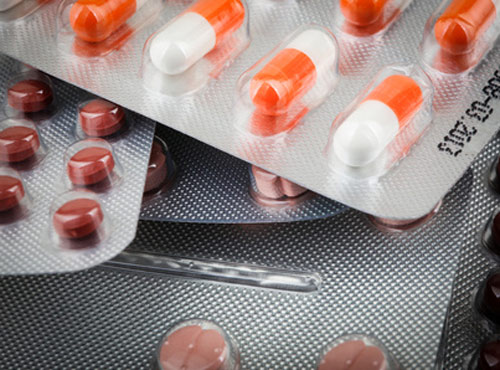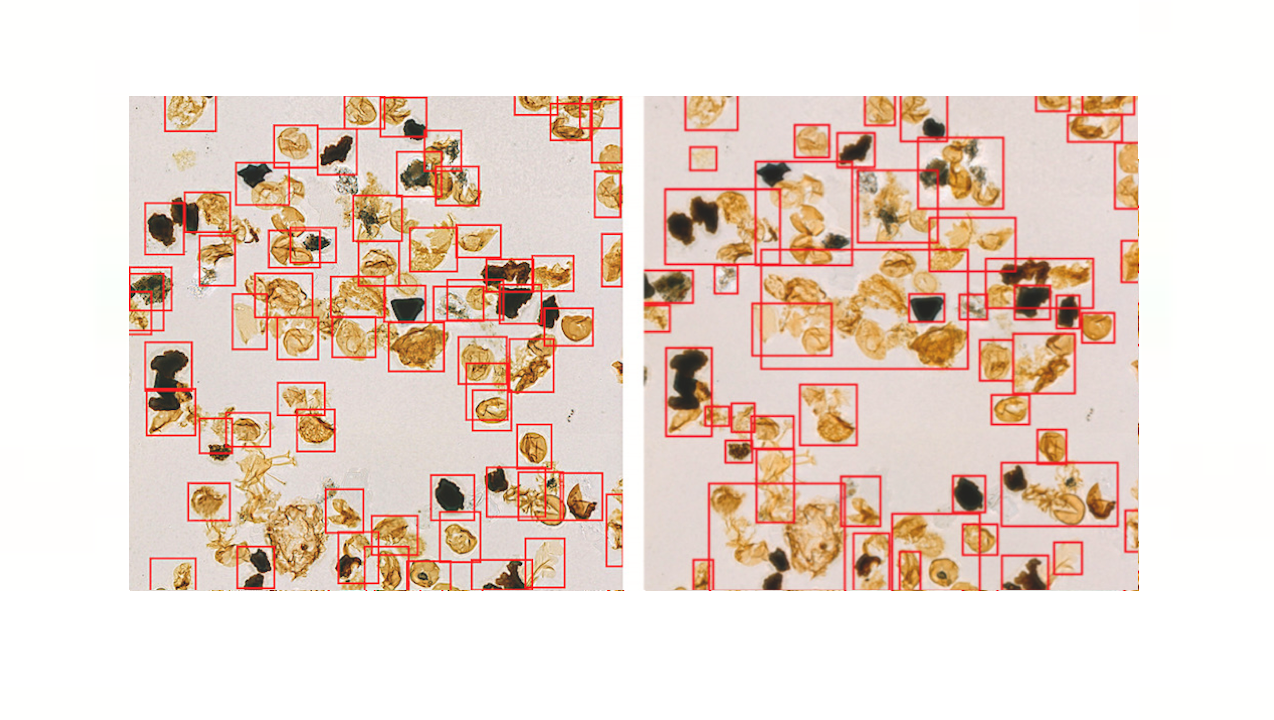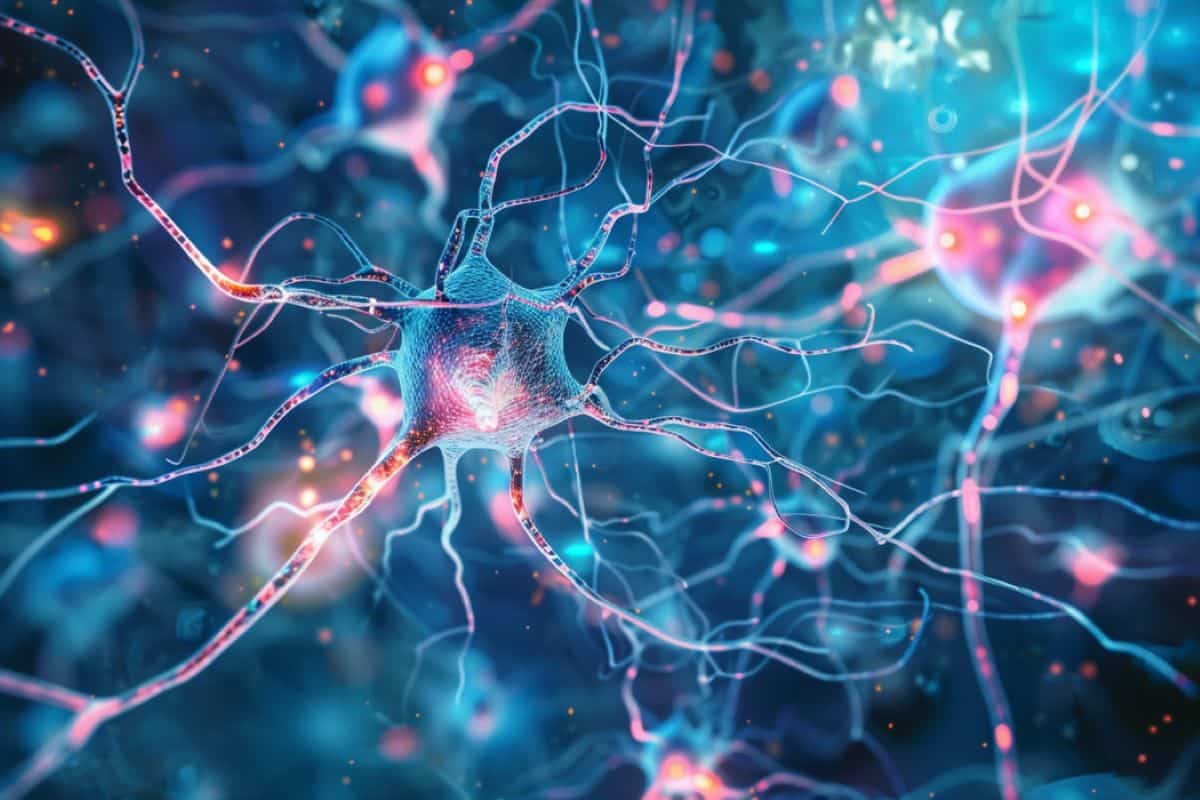
Drugs which are taken orally have to go by the liner of the gastrointestinal (GI) to be taken up. Transporter proteins discovered on cells that line the GI tract assist with this course of, however for a lot of medication scientists don’t know precisely which transporters are concerned. If two oral medication that depend on the identical transporter are taken collectively, the absorption of every may very well be affected by the opposite. Identifying which transporters are utilized by particular medication might assist to point which medication shouldn’t be prescribed collectively, and so feasibly result in improved therapy for sufferers.
Researchers at MIT, Brigham and Women’s Hospital, and Duke University have now developed a multipronged technique to establish the transporters which are utilized by completely different medication. A examine detailing their method, which makes use of each tissue fashions and machine-learning algorithms, revealed {that a} generally prescribed antibiotic and a blood thinner can intrude with one another.
Learning extra about which transporters assist medication go by the digestive tract might additionally assist drug builders enhance the absorbability of latest medication by including excipients that improve their interactions with transporters. “One of the challenges in modeling absorption is that medication are topic to completely different transporters,” stated analysis lead Giovanni Traverso, PhD, an affiliate professor of mechanical engineering at MIT, a gastroenterologist at Brigham and Women’s Hospital. “This examine is all about how we are able to mannequin these interactions, which might assist us make medication safer and extra efficacious, and predict potential toxicities that will have been tough to foretell till now.”
Senior writer Traverso and first authors, MIT postdocs Yunhua Shi, PhD, and Daniel Reker, PhD, reported on their findings in Nature Biomedical Engineering, in a paper titled “Screening oral medication for his or her interactions with the intestinal transportome by way of porcine tissue explants and machine studying.” In their report the crew commented, “Approaches similar to this present that mixtures of applied sciences together with machine studying and tissue engineering can speed up drug and formulation improvement by prioritizing drug candidates and formulations whereas mitigating the dangers of the event of drug resistance and of surprising drug–drug interactions.”
Drug transporters are membrane proteins which have a key influence on the pharmacokinetics, biodistribution and efficacy of medication, the authors wrote. “It is at the moment under-recognized that medication are substrates for a number of drug transporters, resulting in advanced transporter–drug interplay patterns that may drastically scale back bioavailability, improve the chance of drug resistance and exponentially improve the variety of drug–drug interactions …A significant focus in drug discovery and improvement is to grasp the transportome and the interplay between medication and their transporters, particularly within the context of their function in figuring out intestinal absorption of orally administered medicines.”
Previous research have recognized a number of transporters within the GI tract that assist medication go by the intestinal lining. The crew targeted their examine on three: BCRP, MRP2, and PgP. “We concentrated our machine-learning efforts on the three efflux transporters P-gp, BCRP and MRP2 given their significance for medical drug transport as supported by having the best variety of annotated substrates,” the investigators defined.
To perform their examine, Traverso and colleagues tailored a tissue mannequin that they had developed in 2020 to measure a given drug’s absorbability. This experimental setup, primarily based on pig intestinal tissue grown within the laboratory, can be utilized to systematically expose tissue to completely different drug formulations and measure how effectively they’re absorbed. “Our system makes use of intact, ex vivo porcine tissue to mannequin intestinal drug transport in a physiologically related context with related mobile construction and protein expression to what can be present in people,” the investigators famous.
To examine the function of particular person transporters throughout the tissue, the researchers generated small interfering RNAs (siRNA) to knock down the expression of every transporter. “To set up a drug transporter mannequin utilizing porcine small gut tissue, we developed a small interfering RNA (siRNA) knock-down protocol for every transporter in our ex vivo tradition system,” they continued. In every part of tissue, they knocked down completely different mixtures of transporters, which enabled them to review how every transporter interacts with many various medication. “There are just a few roads that medication can take by tissue, however you don’t know which highway. We can shut the roads individually to determine, if we shut this highway, does the drug nonetheless undergo? If the reply is sure, then it’s not utilizing that highway,” Traverso stated.
Using this technique the researchers examined 23 generally used medication, and have been in a position to establish transporters utilized by every of the compounds. The crew then skilled a machine studying mannequin on that knowledge, in addition to on knowledge from a number of drug databases. The mannequin discovered to make predictions of which medication would work together with which transporters, primarily based on similarities between the chemical buildings of the medication.
Using this mannequin, the researchers analyzed a brand new set of 28 at the moment used medication, in addition to 1,595 experimental small molecule medication. This display yielded practically two million predictions of potential drug interactions. Among them was the prediction that the antibiotic doxycycline might work together with warfarin, a generally prescribed blood thinner. Doxycycline was additionally predicted to work together with digoxin, which is used to deal with coronary heart failure, levetiracetam, an antiseizure remedy, and tacrolimus, an immunosuppressant. “We selected doxycycline as the first take a look at compound given its broad medical use and that we had right here recognized and in vivo validated as a novel BCRP and MRP2 substrate,” they commented. “We then manually chosen 4 candidate medication which are recognized substrates of BCRP and MRP2 to review whether or not they might doubtlessly work together with doxycycline.”
To take a look at their predictions on interactions between doxycycline and the 4 medication, the researchers checked out knowledge from about 50 sufferers who had been taking both warfarin, digoxin or levetiracetam after they have been prescribed doxycycline. The knowledge, which got here from a affected person database at Massachusetts General Hospital and Brigham and Women’s Hospital, confirmed that when doxycycline was given to sufferers already taking warfarin, the extent of warfarin within the sufferers’ bloodstream went up, then went again down once more after they stopped taking doxycycline. That knowledge additionally confirmed the mannequin’s predictions that the absorption of doxycycline is affected by digoxin, levetiracetam, and tacrolimus. “We discovered a big improve of all 4 examined medication when co-administrated with doxycycline (P = 0.0001, 0.0413, 0.0004 and 0.0152), whereas ranges returned to baseline after completion of doxycycline remedy,” they commented. “Although we can’t exclude that different unknown enzymes might play a job on this drug–drug interplay, we imagine that the medical knowledge mixed with our ex vivo knowledge present good proof for transporter-driven interactions.”
Only a kind of medication, tacrolimus, had been beforehand suspected to work together with doxycycline. As the authors famous, “… whereas for tacrolimus there have been earlier solutions of potential interactions with doxycycline and not using a clearly recognized mechanism, the opposite three (warfarin, digoxin, levetiracetam) signify at the moment unknown interactions with doxycycline … these instances spotlight the potential of our system to establish clinically related and beforehand unknown drug–drug interactions with fast implications for medical observe.”
Traverso additional acknowledged, “These are medication which are generally used, and we’re the primary to foretell this interplay utilizing this accelerated in silico and in vitro mannequin. This type of method offers you the flexibility to grasp the potential security implications of giving these medication collectively.”
In addition to figuring out potential interactions between medication which are already in use, the identical method may be utilized to medication now in improvement. Drug builders might feasibly use the know-how to assist tune the formulation of latest drug molecules in order to forestall interactions with different medication, or enhance their absorbability. In their paper the crew wrote, “Our knowledge counsel that advanced transport profiles involving multiple transporter are in actual fact frequent amongst each permitted and investigational medication (evaluate Figs. 1a,b and 3d). Therefore, understanding the results of a number of drug transporters on a single compound and characterizing the transportome is important for preclinical drug improvement and medical determination making.” In 2018 Traverso and MIT colleagues co-founded Vivtex, a biotech firm targeted on develop new oral drug supply programs, which is now pursuing that type of drug tuning.
https://www.genengnews.com/topics/translational-medicine/drug-interactions-predicted-with-tissue-model-machine-learning-combo/




